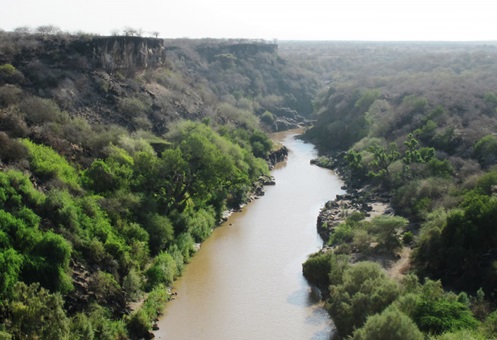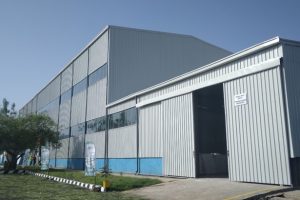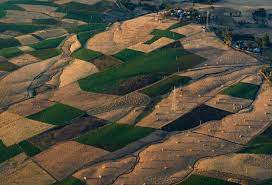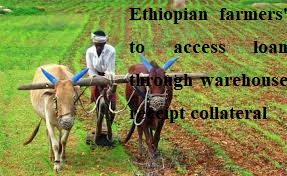
BY MENGESHA AMARE
Where are Ethiopia’s rivers? For how long is the country dependent on rain fed agriculture? These questions can be well answered when the country is in a position to properly exploit its huge rives and other water resources and employ irrigation. True, irrigation plays a vital role in promoting food security in Ethiopia, and offers room for improvement though the country’s irrigation has so far been quite minimal.
It is thus recurrently heralded that Ethiopia is highly endowed with a number or rivers and lakes across its horizons. The mother of the Abay or Nile River, which originates in Ethiopia at Lake Tanna, Awash, Genale, Omo, Tekeze, Dawa, Akobo, Wabi Shebele and other numerous tributaries has been suffering from deficiency of food and other related societal necessities.
Sharing borders with Djibouti, South Sudan, Somalia, Kenya, Eritrea and Sudan, Ethiopia is regarded as the icon of the continent. Topographically, it is rugged, full of mountains, flat landscapes or plateaus as well as a range of lowlands, highlands, semi-high lands and others with respective temperature.
Besides, Ethiopia’s population is now surpassing 120 million and is the second populous country in Africa next to Nigeria. Most of the population in Ethiopia lives in highland area, with 85 percent being rural and dependent on agriculture with a low level of productivity. As this low level of productivity has to be well supported by other means of promoting production and productivity like irrigation, all potentials have to be well exploited.
Taking this fact into account, this writer talked to Wondimagegn Sojato, an agricultural economist to forward expertise. He said, “One of the drivers of growth in the agriculture sector has been the expansion of irrigation as the country has a number of potentially irrigated rivers. The country has witnessed fastest growth in irrigation, and this has been achieved by investing in the sector and harnessing technology to expand irrigation to farmers who traditionally rely on rainfall to water their crops.”
Wondimagegn further elucidated that there is huge potential to expand irrigation and unlock economic growth. Besides, institutions have to set up clear commitments to the benefits of water control and irrigation systems as well as the private sector and farming communities need to be involved in expanding irrigation.
Wondimagegn stated that irrigation areas determine the socio-economic and environmental effects in the nation, the intensity of required irrigation methods, and agricultural production. The size of irrigated area and adopted operations such as intensive irrigation affect crop yield and application of irrigation water.
He said, “It is well recognized that Ethiopia has significant groundwater and surface water resources. As learnt from studies, agriculture has been the main driver of the Ethiopian economy accounting for forty percent of the economic value addition, and approximately over 45 percent of export earnings.”
He also said that expansion of irrigated farming coupled with reliable agricultural inputs and stable markets for the expected growth in farm products, has the potential to propel Ethiopia to the forefront of African countries that have embraced agriculture as the engine of economic growth.
He said, “No doubt, Ethiopia has many river basins, but due to lack of water storage infrastructure and large spatial and temporal variations in rainfall, there is not enough water for most farmers to produce more than one crop per year. This trend has to be well altered to help the nation declare food self-sufficiency so as to defeat poverty.”
Given the amount of water available, even while passing through the semi-arid, arid, and desert areas, it is evident that the promotion of water development technologies, especially irrigation, at both small and large-scales, can provide an opportunity to improve the productivity of land and labor and increase production volumes, he said.
According to Wondimagegn, Ethiopia is increasingly investing in this sector to utilize the advantages of irrigation development. However, there is no clear information and database available. The extent of irrigation development, the locations of developed schemes, their performances, their positive and negative roles and impacts towards food security, poverty alleviation, national economy, environment, etc., have not yet well known so far, of course.
Identifying the existing irrigation development categorized by various river basins, it is also necessary to accurately quantify the area irrigated so that we can understand the extent, distribution and possible impact and contribution of irrigation agriculture to food production, he stated.
As to him, water resource potential is said to be abundant in Ethiopia but still difficult and expensive to exploit. Harnessing some of the sizable rivers can produce some medium- to small-sized irrigation projects.
The small-scale irrigation development will be beneficial for this region for supporting the realization of food self-sufficiency and food security, improving the living quality and standard of the people through the provision of sustainable agriculture. Besides, as enhancing the contribution of irrigation in attaining national development priorities, programs and objectives is of paramount importance in bolstering national economy as well as ensuring food security.
Efforts should also be made to enhance and improve the efficiency and productivity of traditional irrigation to support small-scale irrigation.
He further underlined that the choice of a specific irrigation method depends on a variety of factors and constraints, overall economics of the scheme, subsidies available, accessibility of the site, quality of the soil, extent of irrigable land, and seasonal variation of available water.
“Some research works were carried out in the areas of planting time, irrigation interval, crop water requirements, irrigation and water balance, farmers’ participatory research etc. by development agents, and research and higher learning institutions. There is a great problem in getting sufficient trained manpower in relation to the number of farmers in the area,” he said.
As to him, Ethiopia’s irrigated croplands represent minified magnitude out of the potential irrigations, and so irrigation water withdrawals in the Abbay river basin are almost negligible.
“The history of modern irrigated agriculture in Ethiopia was started with the production of industrial crops (sugar, sesame and cotton) on large-scale farms by private investors in the Awash area during the Derg era. Having a water irrigation system saves time and money while conserving water and contributing to a lush, healthy landscape and protected environment,” he opined.
Irrigation has been the main initial water development and still supports important irrigated agriculture sector. “The country has to further investigate the role of agricultural activities as drivers of salinization and find common contributions of irrigation-specific activities (irrigation water withdrawals, return flows and irrigated area) in sub-basins of high salinity levels and increasing salinization trends.”
Yes, he said, Ethiopia has to choose the right system as it is time to dig the lines for the pipes and irrigation routes. Rivers in irrigated basins typically serve both as the sources of the irrigation water and as the sinks for the drainage water.
He also said that while most of the irrigation water is diverted from the upper reaches of the rivers, most drainage water returns to the lower reaches. This irrigation-induced increase in river salinity generally reinforces already existing natural trends.
Control of the river salinity is usually possible but generally requires the adoption of costly and painful changes in current water use practices and/or poses equally painful restrictions on further developments in the basin.
In sum, as irrigation makes multiple crop productions in places highly dependent on rainfall and contributes a lot to ensuring food security and enables citizens to grow year round without waiting on the rainy season, Ethiopia has to embark on this feasible scheme. The country is also expected to focus on irrigation as it has many irrigable rivers at every state. Besides, irrigated land is more productive than non-irrigated ones, and crop yields that are professionally irrigated would provide farmers with high production than rain fed crops.
THE ETHIOPIAN HERALD TUESDAY 17 JANUARY 2023





